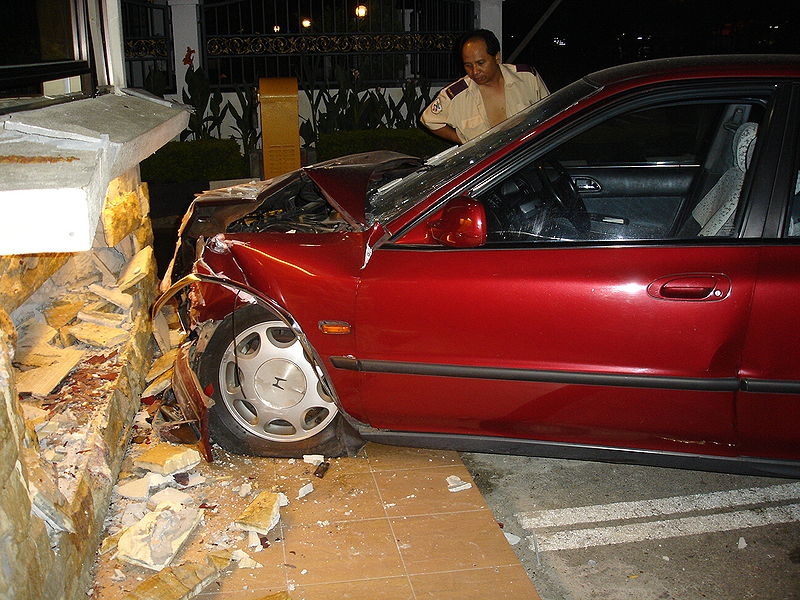Car accidents are usually traumatic for everyone involved, but insurance companies will want to know details to ensure proper recourses are made. In order to determine the type of accident in which you were involved, take note of where the damage is on your vehicle and try to remember any details possible. Knowing the type of car accident will better serve your memory and the insurance claim itself.

A rear-impact car accident can be anything from a light "fender-bender" to a complete total of both vehicles. These accidents can happen when one car hits the car in front of it from behind. Usually, the case is that the first car does not brake in time to avoid hitting the second car. Insurance policies usually always put blame on the car who rear-ends another car for factors of driving distance and break-time.
According to the National Highway Traffic Safety Administration, 29.6 percent of crashes in the U.S. are rear-impact crashes.

A side-impact accident includes any accident where one car hits the side of another, whether by merging into another vehicle's lane, "t-boning" the vehicle by running a stop-sign or just skidding out of control and hitting the side of a car at an angle. A side-impact accident could also involve one car hitting a fire-hydrant on the side.
According to the National Highway Traffic Safety Administration, 28.9 percent of crashes in the U.S. are side-impact crashes.

A head-on collision is when one vehicle front hits another vehicle front or a stationary object. This is not only common in cars, but also trains on a one-track lane. With cars, this happens when one vehicle enters a lane on the opposite side of the street. This is most common at night when drivers fall asleep, but happens any time because of interferences or drunk driving. This can also happen when a car enters a freeway, driveway or one-way street from the wrong direction.
According to the National Highway Traffic Safety Administration, 2 percent of crashes in the U.S. are head-on collisions.

A rollover accident is when a car flips over onto either the side or the roof of the car. This can happen as a result of a head-on collision, side-impact or rear-impact accident, however the main cause is turning sharply while speeding. Tall vehicles, like SUVs or trucks, are more likely to tip over than smaller cars, according to Safercar.gov. Because of this reason, many four-wheel drive vehicles have put more safety precautions in effect, such as reduced steering wheel capability.
According to the National Highway Traffic Safety Administration, 2.3 percent of crashes in the U.S. are rollovers.

A runoff collision is when a car runs off of the road and usually only involves one car. This happens frequently when the driver isn't paying attention or when swerving is involved in order to avoid hitting another vehicle or animal in the road. Although a runoff collision does include driving off of a cliff, it mostly involves running into trees and other items typically on the side of the road. Guard railing is one way city and state governments have tried to prevent fatalities in runoff accidents.
According to the National Highway Traffic Safety Administration, 16.1 percent of crashes in the U.S. are runoffs.
